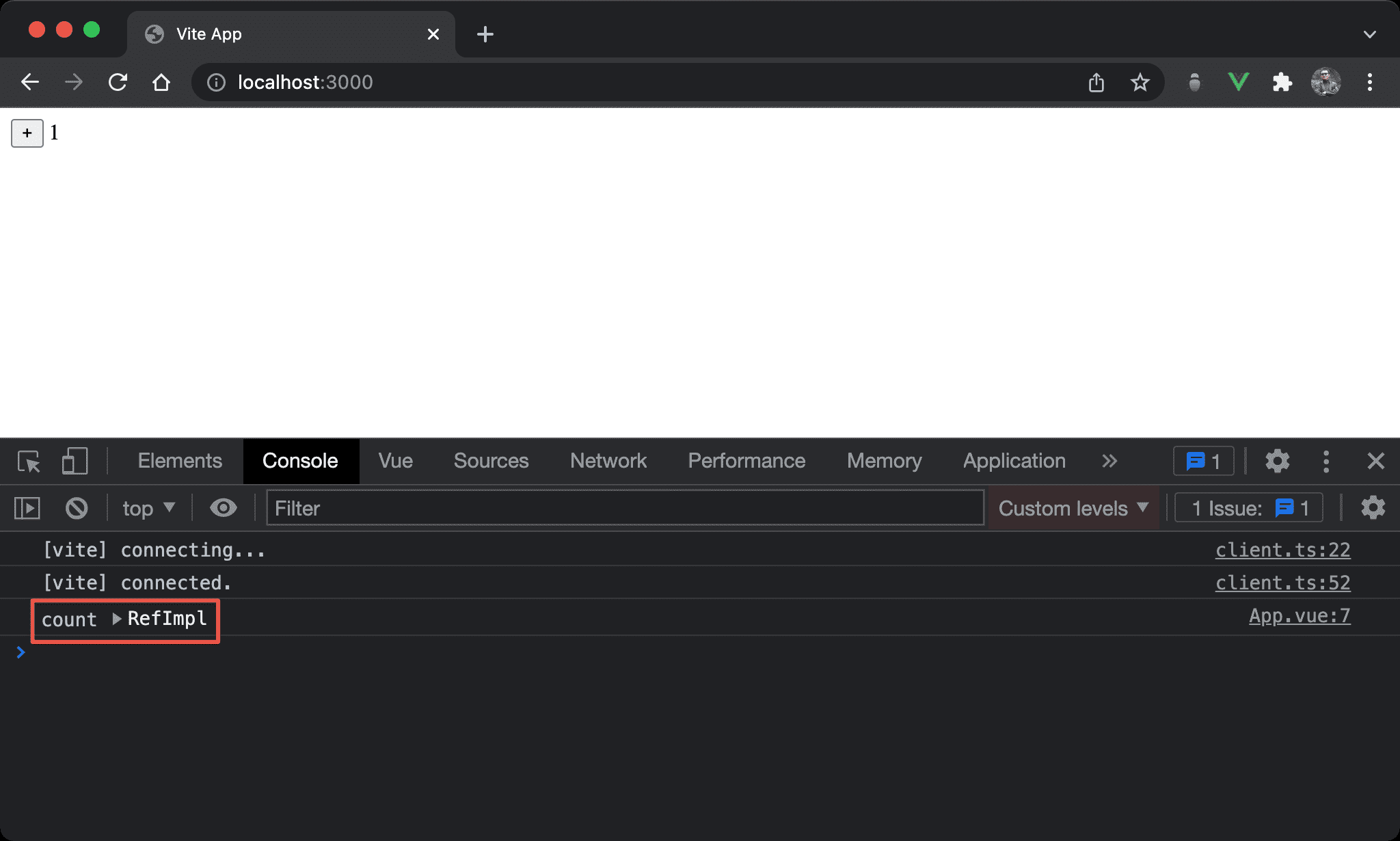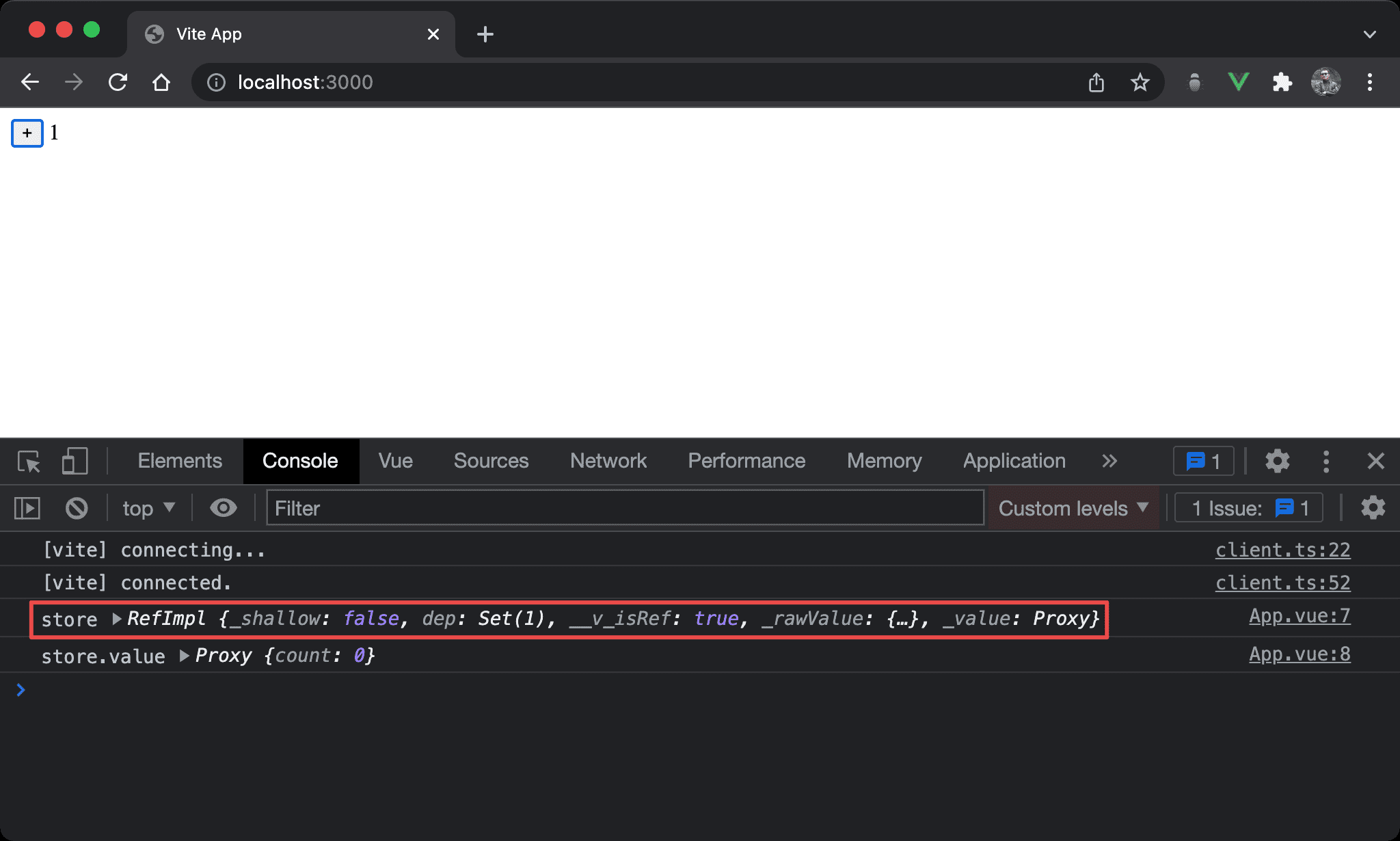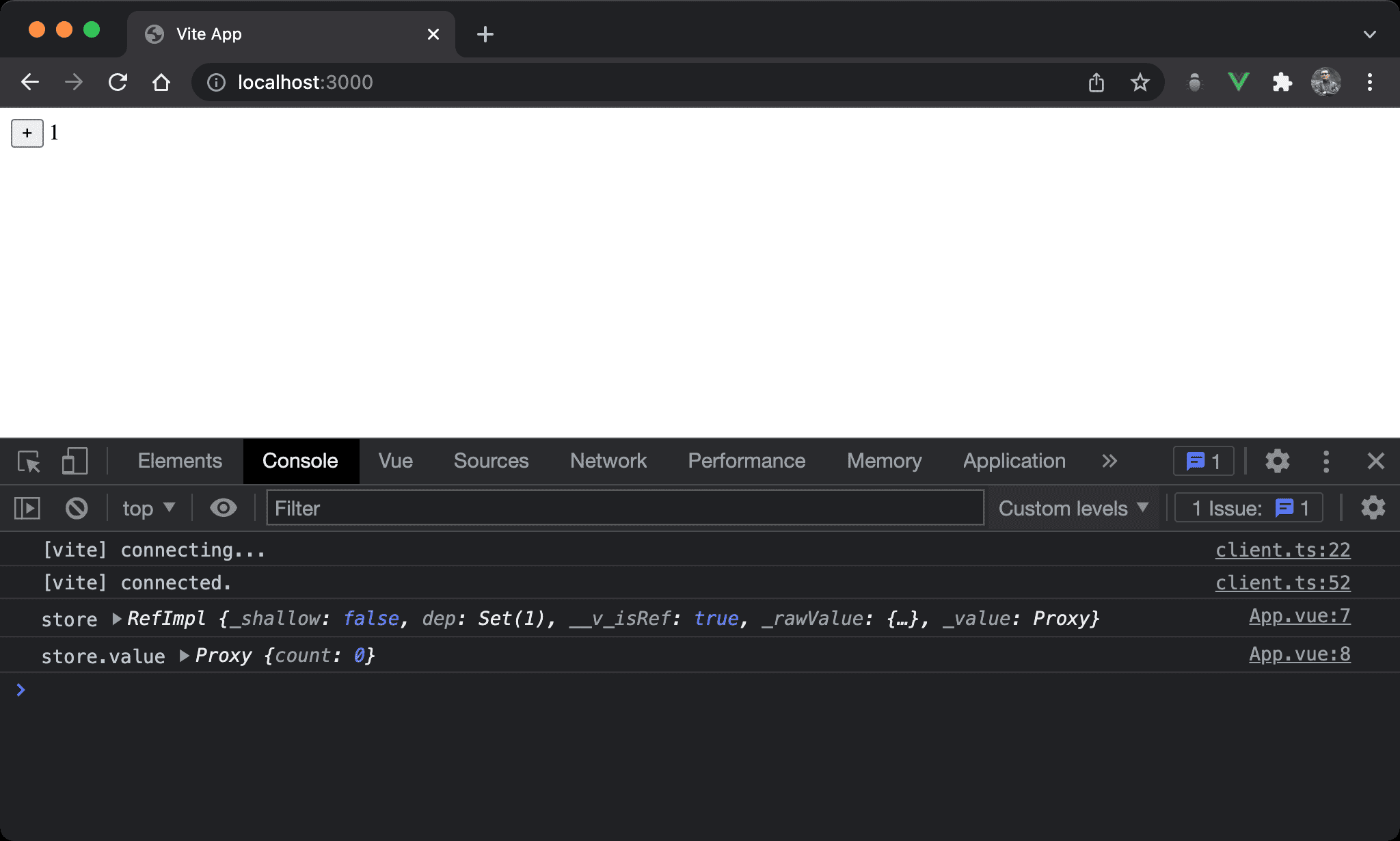Reactivity is an essential part of Vue. We use ref to create a Reactive Reference of value.
Version
Vue 3.2
ref

Use ref to implement the classical counter.
<script setup>
import { ref } from 'vue'
let count = ref (0)
let onClick = () => count.value++
</script>
<template>
<button @click="onClick">+</button> {{ count }}
</template>
Line 4
let count = ref (0)
Use ref to define count Reactive Reference with default value 0.
第 5 行
let onClick = () => count.value++
- We have to use
.valueto read the value from Reactive Reference - We have to use
.valueto write a value to Reactive Reference
Point-free

Use Point-free style to deal with Reactive Reference.
<script setup>
import { ref } from 'vue'
import { read, write } from 'vue3-fp'
import { pipe, inc } from 'ramda'
let count = ref (0)
let onClick = pipe (
read (count),
inc,
write (count)
)
</script>
<template>
<button @click="onClick">+</button>{{ count }}
</template>
Line 6
let count = ref (0)
Use ref to define count Reactive Reference as before.
Line 8
let onClick = pipe (
read (count),
inc,
write (count)
)
Use pipe to compose onClick :
read (count): readcountReactive Referenceinc: increase the valuewrite (count): writecountReactive Reference
Primitive

If we use console.log for Reactive Reference of Primitive, we will get RefImpl.
<script setup>
import { ref } from 'vue'
let count = ref (0)
let onClick = () => {
console.log ('count', count)
count.value++
}
</script>
<template>
<button @click="onClick">+</button> {{ count }}
</template>
Line 6
let onClick = () => {
console.log ('count', count)
count.value++
}
Use console.log to show Reactive Reference.
Object

- If we use
console.logfor Reactive Reference of Object, we will getRefImpl - If we use
.valueto unpack Reactive Reference of Object, we will getProxy, not Plain Object. Sincerefcallsreactivefirst to get Reactive Object and then pack into Reactive Reference
<script setup>
import { ref } from 'vue'
let store = ref ({ count: 0 })
let onClick = () => {
console.log ('store', store)
console.log ('store.value', store.value)
store.value.count++
}
</script>
<template>
<button @click="onClick">+</button> {{ store.count }}
</template>
Line 6
let onClick = () => {
console.log ('store', store)
console.log ('store.value', store.value)
store.value.count++
}
store.value is Proxy, so we can use .count to access count.
Object Destructuring

Use Object Destructuring to Reactive Reference of Object and remain reactivity.
<script setup>
import { ref, toRefs } from 'vue'
let store = ref ({ count: 0 })
let onClick = () => {
console.log ('store', store)
console.log ('store.value', store.value)
let { count } = toRefs (store.value)
count.value++
}
</script>
<template>
<button @click="onClick">+</button> {{ store.count }}
</template>
Line 6
let onClick = () => {
console.log ('store', store)
console.log ('store.value', store.value)
let { count } = toRefs (store.value)
count.value++
}
- Since using
.valueto unpack Reactive Reference of Object is Proxy, we have to usetoRefsfirst to convert it to Plain Object before destructuring - Destructured result is Reactive Reference. We have to use
.valueto access it
Conclusion
refin Vue 3 is great, but there are.valueeverywhere in the codebase- We don’t have to concern about
.valuein Point-free style.readandwritewill handle.valuefor us - If we see
RefImplin the console, it is a Reactive Reference. We have to use.valueto unpack it - If we use
refwith Object, it will callreactivefirst to make it a Reactive Object and then pack it as Reactive Reference. That’s why.valueof Reactive Reference of Object isProxy - Since
.valuewith Reactive Reference of Object is Proxy, we cannot use Object Destructuring to destructure Object. It will lose reactivity. We have to usetoRefsfirst to convert it to a Plain Object before destructuring - Reactive Reference is good for Primitive, but Reactive Object is good for Object